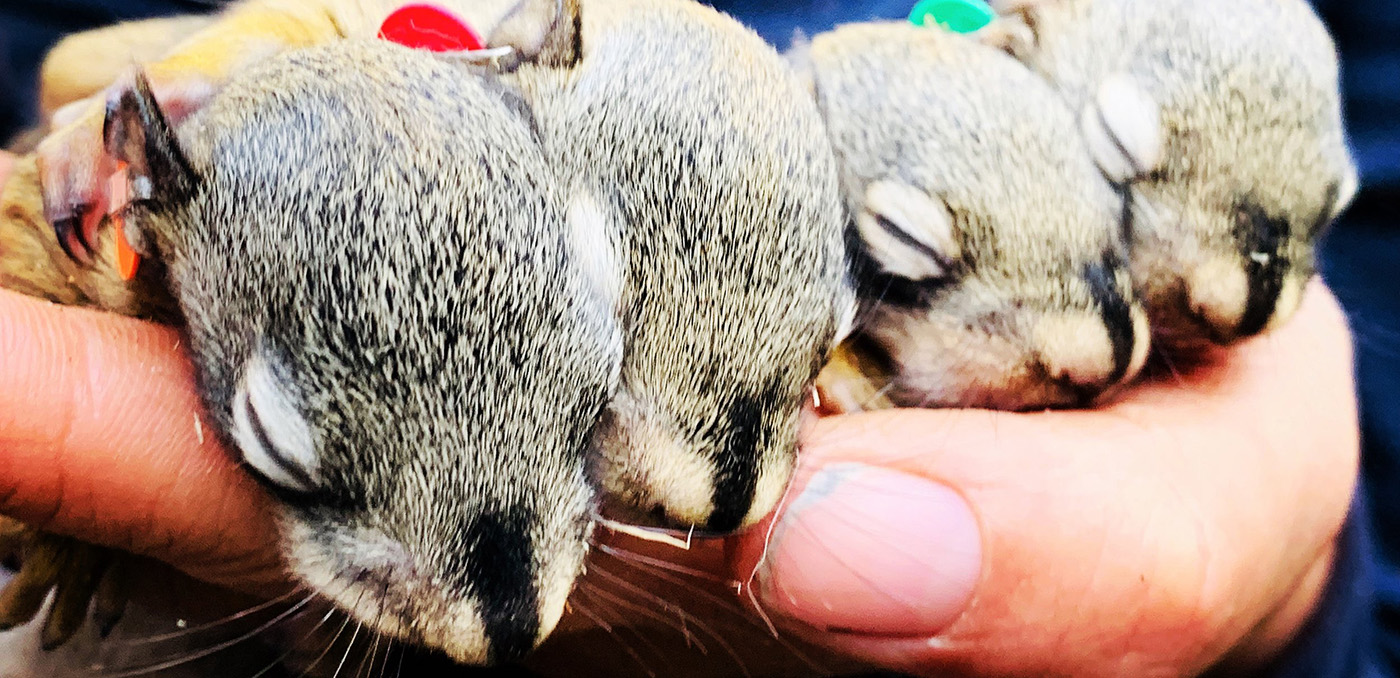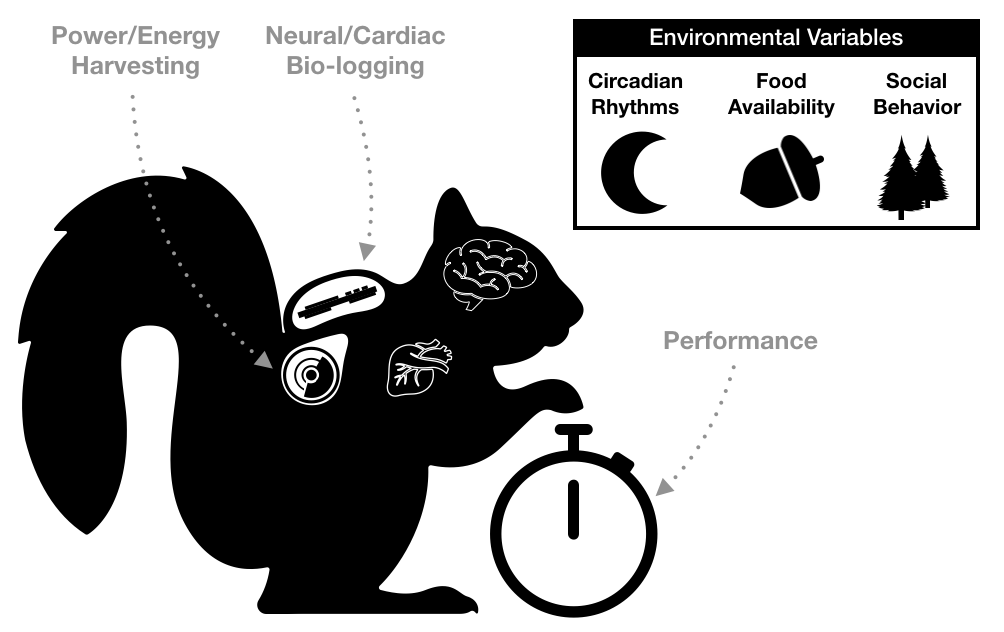biologging

We are developing A Reusable Bio-Observatory (ARBO)—an implantable bio-logger that can record cardiac and neural rhythms.
What is bio-logging?
The use of miniaturized, animal-borne bio-loggers to make physiological and environmental measurements from free-ranging animals is radically transforming scientific capabilities (Williams et al., 2019). We have recently explored how to implement these technologies to expand the methods and resolution by which stress and performance are quantified in the wild (Gaidica & Dantzer, 2019).
Current Challenges
Bio-logging is historically niche due to the unique constraints of field biologists. From fish to birds, it is unreasonable to expect a one-size-fits-all solution. However, the ambitious goals of individuals can and should generalize to the bio-logging community under the following headings:
- Standardize data collection and analysis methods.
- Communicate approaches and insights.
- Innovate tools and technologies.
We are doing our best to make our projects open source. You can read more about our approach in the Wiki.
Why squirrels?
 The ecological niche occupied by wild squirrels has been conserved for millions of years and is highlighted by their unique adaptations to arboreal life (i.e., in the trees). Their ability to regulate energy and maintain fitness through a variety of natural and imposed challenges ultimately determine their pedigree and survival. Little is known about how the central nervous system (CNS) is involved in these natural behaviors. One of our goals is to use bio-loggers to record from the CNS of wild squirrels to understand how their physiology and behavior are correlated, given the varying demands of their environment. Adding resolution to these important ecological factors is an important consideration to ongoing conservation work, potentially highlighting what ‘optimal adaptations’ are from a physiological perspective.
The ecological niche occupied by wild squirrels has been conserved for millions of years and is highlighted by their unique adaptations to arboreal life (i.e., in the trees). Their ability to regulate energy and maintain fitness through a variety of natural and imposed challenges ultimately determine their pedigree and survival. Little is known about how the central nervous system (CNS) is involved in these natural behaviors. One of our goals is to use bio-loggers to record from the CNS of wild squirrels to understand how their physiology and behavior are correlated, given the varying demands of their environment. Adding resolution to these important ecological factors is an important consideration to ongoing conservation work, potentially highlighting what ‘optimal adaptations’ are from a physiological perspective.
Research Platform
 Evolutionary pressures on wild animals engender advantageous platforms for study because behavior is so crucially linked with fitness. How mammalian physiology copes and adapts in response to changing environments is an important question that can benefit from the added resolution of bio-loggers. In addition to scientific investigations, the squirrel is a useful model to address many outstanding technical challenges—not unique to ecology—that make long-duration studies in harsh environments possible.
Evolutionary pressures on wild animals engender advantageous platforms for study because behavior is so crucially linked with fitness. How mammalian physiology copes and adapts in response to changing environments is an important question that can benefit from the added resolution of bio-loggers. In addition to scientific investigations, the squirrel is a useful model to address many outstanding technical challenges—not unique to ecology—that make long-duration studies in harsh environments possible.
Kluane Red Squirrel Project
The Kluane Red Squirrel Project (KRSP) is an interdisciplinary, large-scale field experiment located in the Canadian Yukon. KRSP has been collecting ecological and behavioral data on squirrels since 1987 and conducts a variety of studies and surveys on the population and food availability every year.

Squirrels in the Yukon face intense challenges including drastic changes in light/dark cycles through each season. During the summer months there is very little darkness (see image above). This natural rhythm makes KRSP and the squirrel an ideal candidate to study the affects of circadian entrainment.